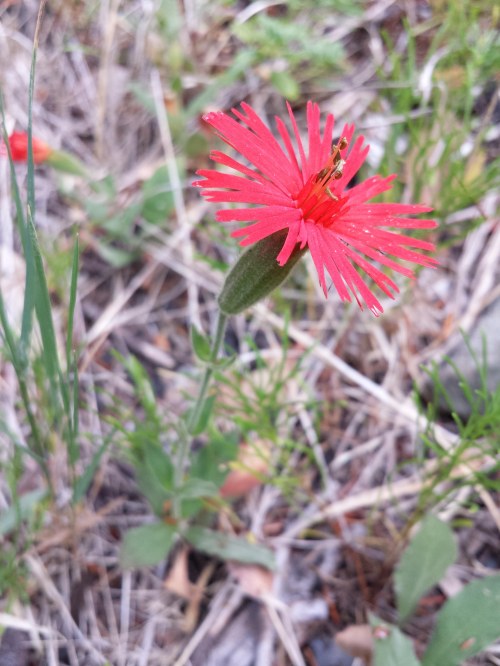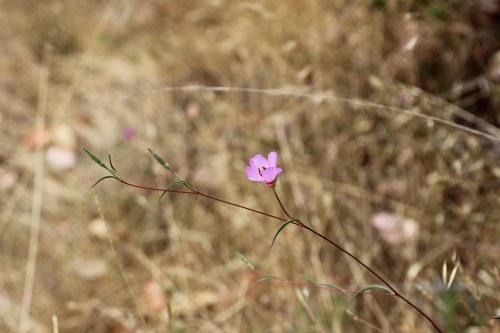Crimson flares from the underbrush. Cardinal catchfly (Silene laciniata) is such a bright red that it messes with the eye a little bit; the flowers pictured here seemed especially bright when spotted in the serpentine chaparral on a foggy Mt. Tamalpais hike.
This glorious little native is in the Caryophyllaceae family, which also houses the classic carnation. But the intense color and extravagant petals that are lobed into a fine fringe put the tame storebought blooms to shame. It grows throughout California, and ranges south as far as Texas. Native Americans used it medicinally as a poultice for burns and ant bites (as well as a treatment for mad dog or coyote bites). 




























